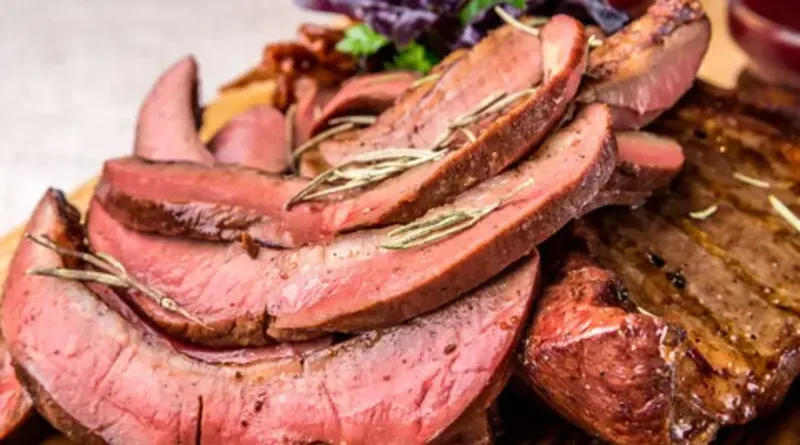Exploring the Health Benefits of Beef Heart Nutrition
Welcome to the realm of beef heart nutrition, where you will find a thorough guide to utilizing this often-underappreciated nutritional powerhouse. We explore the abundant nutritional profile, health advantages, and culinary applications of beef hearts in this piece.
Find out why including this high-nutrient organ meat in your diet can have a revolutionary effect on your general health and well-being. Together, we can uncover the hidden benefits of beef heart and transform your diet. Let’s go on an adventure.
Beef Heart Nutrition Profile
In addition to being tasty, beef heart is a great source of important nutrients that support general health and vigor. This is an overview of its outstanding nutritional profile:
Protein:
High-quality protein, which is necessary for muscle growth, repair, and general tissue maintenance, is abundant in beef hearts. About 22 grams of protein can be found in a 3-ounce portion of cooked beef heart. Making it a great option for those trying to achieve their daily protein requirements.
Vitamins (Beef Heart Nutrition):
B12, B6, riboflavin (B2), and niacin (B3) are among the many B vitamins that are especially abundant in beef heart. These vitamins are essential for red blood cell formation, energy metabolism, and nervous system health.
Minerals:
Iron, zinc, phosphorus, and selenium are among the minerals that can be found in beef heart. Zinc is crucial for DNA synthesis, wound healing, and immune system function. While iron is necessary for the blood’s ability to carry oxygen and for the production of red blood cells.
For healthy bones and energy metabolism, phosphorus is essential, and selenium is a potent antioxidant that shields cells from harm.
The Health Advantages of Eating Beef Heart
Heart Health:
Eating beef heart can improve heart health, despite its moniker. It is a great source of Coenzyme Q10 (CoQ10), which lowers the risk of heart disease and helps to maintain appropriate blood pressure, both of which improve cardiovascular health.
Furthermore, the critical minerals found in beef heart, including vitamin B12 and folate. Help prevent homocysteine buildup, which is linked to a higher risk of cardiovascular problems.
Muscle Growth and Repair:
Rich in all the critical amino acids required for muscle growth, repair, and maintenance, beef heart is a protein powerhouse. Because beef heart has a high protein level, it’s a great food option for athletes, fitness fanatics, and bodybuilders.
Energy Boost (Beef Heart Nutrition):
Packed with B vitamins, such as vitamin B12, niacin (B3), and riboflavin (B2), beef heart aids in the body’s natural conversion of food into energy. These vitamins help fight exhaustion and encourage general vitality by participating in metabolic processes that turn proteins, lipids, and carbs into energy the body can use.
Optimal Blood Health:
For the best possible blood health, beef heart is a great supply of iron, a mineral that red blood cells need to produce hemoglobin. A sufficient amount of iron helps the body’s oxygen to be transported throughout, reducing diseases such as iron-deficiency anemia and enhancing blood health in general.
How to Include Beef Heart in Your Diet?
Start with Tiny Pieces:
It’s recommended to start with tiny pieces of beef heart if you’ve never eaten it before. As you become used to the flavor and texture, you may then gradually increase your consumption.
You can experiment with new cooking techniques and flavor combinations, as well as facilitate the transition, by adding small portions of beef heart into dishes that you are already familiar with.
Blend with Ground Meat:
Blending beef hearts with ground beef or other ground meats is a simple method to include beef hearts in your diet. To accomplish this, chop or grind the beef heart finely and combine it with ground meat when making burgers, meatballs, meatloaf, or tacos.
Slice Thinly for Stir-Fries:
To provide a tasty protein boost to stir-fries or sautéed foods, slice beef heart thinly. You may help tenderize the meat and add more flavor by marinating the sliced beef heart in your preferred sauce or seasoning. Mix with veggies, spices, and herbs to make a tasty and wholesome supper.
Braise for Tender Texture:
Braising is a cooking technique in which meat is cooked slowly in a liquid until it becomes tasty and tender. Braising works well with beef hearts because it softens the rough fibers and produces a delicate texture. For a filling and substantial supper, braised beef heart might be served with potatoes, grains, or vegetables.
Cooking and Preparation Tips
Trim Fat and Clean:
Remove excess fat and rinse beef heart under cold water.
Tenderize:
Use a meat mallet or marinate to tenderize tough fibers.
Slice or Dice:
Cut beef hearts into thin slices or cubes for cooking.
Marinate for Flavor (Beef Heart Nutrition):
Marinate in your favorite seasoning or sauce for enhanced taste.
Grill, Braise, or Stir-Fry:
Cook beef heart on the grill for charred flavor, braise for tenderness, or stir-fry for quick meals.
Experiment (Beef Heart Nutrition):
Explore various cooking methods to find your favorite way to enjoy beef heart.
Conclusion
To sum up, beef heart is a nutritional powerhouse that provides an abundance of key elements that are critical for general health and vigor. Beyond its high protein content, beef heart offers a multitude of health benefits, such as supporting heart health, muscular growth, energy metabolism, and optimal blood health.
It also contains an abundance of vitamins and minerals. Including beef heart in your diet is not only healthy but also adaptable because there are so many delectable ways to prepare it. Accepting the undiscovered advantages of beef heart sets you on the path to improving your health and nutrition. Together, let’s enjoy this journey and realize the nutritional potential of beef heart.
You Can Read More About Beef
Ground Beef Nutrition: Maximize Your Health With its Benefits
Roast Beef Nutrition Facts: Unlock the Benefits and Enjoy Meals
